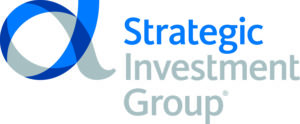
Opinions expressed in AGB blogs are those of the authors and not necessarily those of the institutions that employ them or of AGB.
Endowment Management for Higher Education was published in June 2017 by AGB. The lessons learned from the GFC was on our mind when we wrote it. As we face the current economic and public health challenges due to the COVID-19 pandemic, we find that the key topics we included in the introduction of the book remain as true as ever. This modified introduction of the book offers principles to help guide investment committee members as they shoulder their important fiduciary responsibility during this crisis.
By Nikki Kraus
Introduction
The volunteers who serve on the investment committees of public and independent colleges and universities assume important fiduciary responsibilities. Their challenge is to help secure the future of their colleges and universities by managing their endowments wisely. They also undertake the important social role of preserving intergenerational equity, ensuring that today’s students and future students benefit equally from the endowments.
Endowments are an increasingly precious resource to cover rising costs, strengthen financial resilience, support important initiatives, and help keep higher education affordable. The work of a college or university investment committee member has never been more important. The future of excellence in higher education is at stake.
Husbanding endowment resources through complicated and unforgiving times in financial markets presents a whole set of additional challenges. For years, an 8 or 9 percent return on endowments has been commonly used in long-term budget plans. However, many members of investment committees believe that it will be more difficult going forward to generate the level of investment returns required to preserve intergenerational equity, which was best defined by economist and Nobel laureate James Tobin, who aptly noted: “The trustees of an endowed institution are the guardians of the future against the claims of the present. Their task is to preserve equity among generations.” Markets are becoming increasingly complex, and in slower-growth markets, more modest investment returns will be generated. Opportunities to beat the market are growing scarcer, while the opportunities for costly missteps mount.
Yet growing endowments are indispensable to maintaining higher education as we know it. Current budgetary outlays rely on regular transfers from the endowment, while the long-term financial viability of universities and colleges depends on preserving and increasing endowment resources. Without endowments to help defray ever-rising costs, higher education would be an unattainable dream for many talented people.
The challenges of investing are both technical and human. Stories abound of institutions with brilliant technical investment processes but poor governance practices that undermined the work of their investment teams.
Unfortunately, markets continue to teach painful lessons for all types of investors, including those charged with protecting and increasing institutional endowments.
The following list reviews some of the important lessons of recent years:
- Many investment committees do not accurately assess their tolerance for risk. Some committees may take too much risk (only to subsequently be forced to unwind it at an inopportune time), while others may take too little risk, creating significant opportunity costs. Often, a lack of communication and coordination between a board’s finance and investment committees prevents the development of an integrated “enterprise risk management” approach that considers the overall operating, financial, and investment risks of the institution, rather than the suboptimal approach of assessing each in isolation.
- Maintaining appropriate liquidity is critical. There is a risk that institutions undervalue liquidity and find themselves unable to meet liquidity requirements for their institutions.
- Many institutions seek to emulate others and focus too much on the investment strategies followed by a few large universities. This focus misses the essential point that the strategies pursued by each investment committee must be tailored to its particular institution’s circumstances, capabilities, and long-run strategic goals. The additional flexibility and organizational strength that the largest, wealthiest institutions have due to their balance sheets and competitive positioning should not be underestimated. Only institutions with multiple billions of dollars and access to top-tier investment talent should even consider this model; other institutional leaders must be more aware of their budgetary needs and level of dependence on the endowment.
- Operational due diligence is critical. It is vital to understand each portfolio manager’s investment process and performance. A careful evaluation of a manager’s people, processes, conflicts and controls, both at the time of initial investment and on an ongoing basis, is a best practice for all investment programs.
- Leadership is critical. The leaders of investment committees must understand that their institutions’ futures may depend on the success of this committee. The best investment committee chairs act as servant leaders who ensure each member of their committee participates appropriately. Each member must be up to the task. Each member must have the requisite skills and judgment and dedicate the necessary time to fulfill his or her obligations. This makes recruitment and vetting of prospective committee members a high priority. If warranted, failure to perform may lead to the removal of a committee member. It is far better to avoid this circumstance by fully informing potential candidates of the duties of committee members and the time and energy commitment before they accept.
- Communication about the investment program among senior officials—including the chair of the board, the chair of the investment committee, the head of institutional development, and the president—must be frequent and clear. This is equally true for independent and public institutions that may have separate foundation boards. The early involvement of all key leaders in certain strategic decisions regarding asset allocation, spending policy, and risk tolerance can be crucial. If any of these officials lose faith in the investment program at the wrong time, they may instigate changes that can wreak havoc on investment returns.
- Institutional memory should be valued and preserved. The stability of the investment committee’s membership is important.
With Thanks to AGB Sponsor: Strategic Investment Group
Nikki Kraus
Managing Director, Global Head of Client Development
Strategic Investment Group
NKraus@strategicgroup.com



